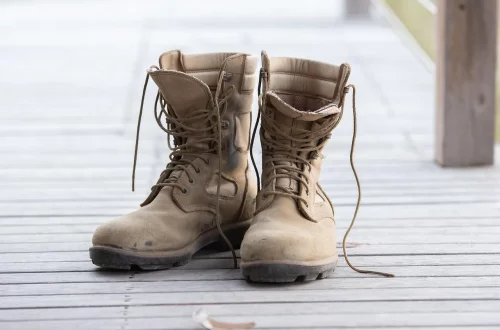
The Ultimate Guide to Choosing the Perfect Squat Suit for Strength Training
Strength training is a fundamental aspect of fitness that appeals to a wide range of individuals, from casual gym-goers to competitive athletes. One of the critical elements that can significantly enhance performance and safety during strength training is the choice of suitable gear. Among the various types of equipment available, squat suits have gained considerable attention for their ability to provide support and stability during squatting exercises. These specialized garments help lifters maximize their performance while minimizing the risk of injury.
Choosing the right squat suit is not merely about aesthetics; it involves a comprehensive understanding of fabric technology, fit, and functionality. A well-designed squat suit can aid in maintaining proper form, allowing for greater weight loads and improved lifting efficiency. Furthermore, selecting the appropriate suit can help manage body temperature, enhance circulation, and provide the necessary compression to support muscle performance.
As strength training continues to evolve, so too does the technology behind squat suits, making it essential for lifters to stay informed about the latest developments. Understanding the various features and specifications can empower athletes to make educated decisions that align with their specific training goals and body types. Ultimately, the right squat suit can be a game-changer, leading to improved results and a more enjoyable training experience.
Understanding the Benefits of Squat Suits
Squat suits are designed to provide substantial support and stability during heavy lifting, particularly in squats. One of the primary benefits of wearing a squat suit is the enhanced support it offers to the lifter’s core and lower body. This support is crucial when attempting to lift heavy weights, as it helps maintain proper posture and alignment. With the right squat suit, lifters can engage their muscles more effectively, leading to improved performance and greater strength gains over time.
Another significant advantage of squat suits is the compression they offer. The snug fit of the suit helps to increase blood flow to the muscles, which can enhance endurance and reduce fatigue during intense training sessions. This increased circulation can also aid in recovery, allowing lifters to bounce back more quickly after workouts.
Moreover, squat suits can help protect against injuries. By providing additional support to the knees and lower back, these suits can minimize the risk of strains and sprains that often occur during heavy lifts. This is particularly important for athletes who are training for competitions and need to ensure they remain injury-free.
Additionally, squat suits come in various materials and designs, allowing lifters to select options that best suit their needs. Different fabrics can offer varying levels of flexibility, compression, and durability, making it essential to understand how these factors contribute to overall performance. Ultimately, the right squat suit can significantly enhance a lifter’s experience, making workouts more effective and enjoyable.
Choosing the Right Fit and Size
When it comes to selecting a squat suit, fit and size are among the most critical factors to consider. A well-fitting squat suit should provide the right amount of compression without causing discomfort or restricting movement. Lifters must take accurate measurements of their bodies, including chest, waist, hips, and thigh circumference, to find a suit that fits perfectly.
It is essential to refer to the sizing charts provided by manufacturers, as sizes can vary significantly between brands. Many companies also offer guidance on how to choose the correct size based on individual lifting styles and body types. For example, some lifters may prefer a tighter fit for maximum support, while others might opt for a looser suit for increased mobility.
Once a lifter selects a squat suit, it’s advisable to try it on and perform some test movements, such as squats or lunges, to ensure it allows for full range of motion. A suit that is too tight can lead to restricted movement and discomfort, while an overly loose suit may not provide the necessary support.
Additionally, the material of the squat suit can influence its fit. Suits made from elastic or polyester blends typically offer a more forgiving fit, while those made from stiffer materials may provide more support but could be less comfortable. Therefore, it’s essential to consider both the fit and the fabric when making a selection.
Ultimately, finding the right fit and size contributes significantly to a lifter’s performance and comfort during training sessions. Investing time in this process can lead to more effective workouts and a reduced risk of injury.
Material and Construction Considerations
The material and construction of a squat suit play a crucial role in its overall performance and effectiveness. Various fabrics are used to create squat suits, each with its own set of properties that can affect durability, flexibility, and support. Common materials include polyester, spandex, and nylon blends, which are designed to provide both strength and stretch.
Polyester is a popular choice for squat suits due to its durability and resistance to wear and tear. It offers a good level of support while remaining lightweight, making it comfortable for extended training sessions. On the other hand, spandex is often incorporated into the design for its elasticity, allowing for a snug fit that can adapt to the lifter’s movements.
Construction techniques also impact the effectiveness of a squat suit. Look for suits that feature reinforced seams and stitching, as these elements can enhance the suit’s longevity and reliability during heavy lifts. Additionally, some manufacturers incorporate specialized panels or designs that provide targeted support to specific muscle groups, further enhancing performance.
Breathability is another essential factor to consider when selecting a squat suit. Training can lead to increased body temperature, and a suit that allows for proper airflow can help regulate this. Look for suits with moisture-wicking properties, as they can help keep the body dry and comfortable during intense workouts.
In summary, the material and construction of a squat suit significantly influence its performance. By paying attention to these aspects, lifters can select a suit that not only meets their needs but also stands up to the rigors of strength training.
Maintenance and Care for Longevity
Proper maintenance and care of a squat suit are crucial for ensuring its longevity and performance over time. Like any specialized equipment, squat suits require specific attention to detail to maintain their structural integrity and comfort.
First and foremost, always follow the manufacturer’s care instructions. Most squat suits can be machine washed, but it’s advisable to use a gentle cycle and cold water to prevent damage to the fabric. Avoid using fabric softeners, as they can affect the suit’s compression properties and overall fit.
After washing, air drying is typically recommended. Avoid using a dryer, as the heat can cause shrinkage or damage the materials. Instead, hang the suit in a well-ventilated area away from direct sunlight to ensure it dries properly without compromising its shape.
Storing the squat suit correctly is also important. Avoid folding it in ways that could create creases or stress the seams. Instead, consider hanging it or rolling it gently to maintain its form.
Regularly inspect the suit for any signs of wear and tear, such as fraying seams or fabric thinning. Addressing these issues promptly can prevent further damage and prolong the life of the suit.
In conclusion, taking the time to care for a squat suit can significantly enhance its longevity, ensuring that it continues to provide the necessary support and performance benefits for strength training. By following these maintenance tips, lifters can protect their investment and maximize their training experience.
In summary, selecting the perfect squat suit is a multifaceted process that requires careful consideration of fit, material, and maintenance. By understanding these factors, lifters can make informed choices that enhance their strength training efforts and contribute to long-term success in their fitness journeys.
**Disclaimer:** This article is not intended as medical advice. For any health concerns, please consult a qualified healthcare professional.




